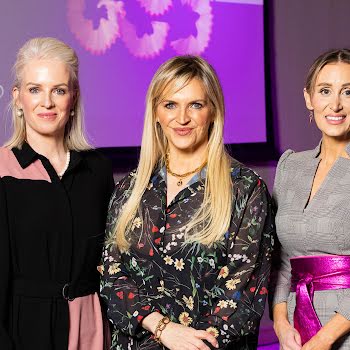Still can’t quite wrap your head around NASA’s latest imagery? Here’s what we’re *actually* looking at
By Sarah Gill
15th Jul 2022
15th Jul 2022
Still can’t quite wrap your head around NASA’s latest imagery? Here’s what we’re *actually* looking at
Though we may have been vaguely aware of it before, the release of NASA’s latest imagery have made us truly realise that we are teeny tiny floating heads in an infinitely vast universe that no one quite knows the magnitude of.
I’m sure by now you’ve seen those (literally) out of this world celestial images circulating online in all their mind-boggling glory. The first set of technicolour pictures beamed back from the James Webb Telescope — the most powerful orbital observatory of all time — was released by NASA earlier this week, and we’re still attempting to process what they mean.
we’re so small im gonna throw up pic.twitter.com/a9uH2uf78g
— connor (@connorfranta) July 12, 2022
For context, the James Webb Telescope was launched in December 2021, and is orbiting the sun in a region of space called the Lagrange point. Positioned over four times further away from planet earth than the distance between us and the moon, it’s about one million miles away.
Speaking on the historical event, NASA Administrator Bill Nelson said “Today, we present humanity with a groundbreaking new view of the cosmos – a view the world has never seen before. These images, including the deepest infrared view of our universe that has ever been taken, show us how Webb will help to uncover the answers to questions we don’t even yet know to ask; questions that will help us better understand our universe and humanity’s place within it.”
The result of decades worth of effort, these images are a colossal step towards solving cosmic mysteries, magnifying details of the universe that were entirely unknown before this week.
“Every image is a new discovery,” Nelson says. “Each will give humanity a view of the universe that we’ve never seen before.”
So, what do these awe-inspiring images actually show us?

Distilling otherwise mind-numbing information into palatable bite sized pieces, science communicator and TikTok sensation Hank Green broke things down a little further. To put the above image into perspective, imagine that you’re holding out a single grain of sand at arm’s length. This picture would be that grain of sand.
Everything that doesn’t have what can only be described as a lens flare coming off it is a galaxy. The smudges and arcs that surround the middle cluster of galaxies in the centre of the image are actually a whole lot further away than you would think, because that cluster is so inexplicably large, is warps space and light, allowing the telescope to catch a glimpse of what we might otherwise have missed.
Hank Green describes his as “‘a giant natural telescope [created by the universe] that’s better than anything we could ever design in terms of how much it can magnify”. The cluster is acting as a giant lens in the sky, bending light around it so that we can see some of the first galaxies ever formed.
That’s right, we’re looking 13 and a half billion years into the past at the very first structures to exist in the universe. Anyone else have chills right now?

Above in an image of the Carina Nebula, or the cosmic cliffs, which measure about 16 light years from top to bottom. One of the largest star-forming regions in space, it’s made up of a huge collection of gas and dust.
That gas is being warmed up by the stars, and radiates an infrared heat that makes the whole area detectable by the telescope. The wispiness around the edges is where the stars are ionising and eroding that gas and dust.
Among these other images, we can see the Southern Ring planetary nebula, which is made up of an expanding cloud of gas that surrounds a dying star approximately 2,000 light years away. According to NASA, Webb can explore the expelling shells of dust and gas of ageing stars that may one day become a new star or planet, from birth to death as a planetary nebula.
Stephan’s Quintet is also among the images discovered by the James Webb Telescope. A compact group of galaxies, this image of Stephan’s Quintet reveals the velocity and composition of the gas near its supermassive black hole, allowing scientists to see in detail how interacting galaxies trigger star formation in each other.

Though our eyes can’t detect it, and our brains are seemingly unable to comprehend it, this view of the infinitely far-reaching and mind-blowingly large universe we’re lucky enough to be a part of is enough to send you into an out-and-out existential breakdown.
But let’s reframe our focus. While the ‘we are but a spec of sand floating on a rock’ mindset may foster a unique form of nihilism, allow yourself to be amazed at the utter vastness of the world around us. With so much more to be discovered, and a chance that there is so much potential life out there in the unknown, there’s comfort in the realisation that you’re part of something so incredibly big.
On the NASA live stream, they read a quote often misattributed to Carl Sagan, that are actually the words of Sharon Begley: “Somewhere, something incredible is waiting to be known.”























